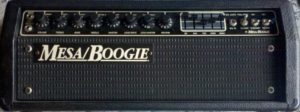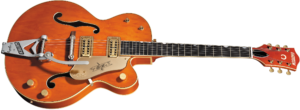Last week we looked into how important instrument choice is. This week we are going to get into a topic that can go on and on and on and on… AMPS:) Oh, there is just sooo much to cover and this will be a topic for many more blog posts and videos. This blog post, however, will narrow the topics down to some of the recent amps that were used on some of the 2016 albums that have been released.
 The first amp I’m going to take a quick look at is my ‘65 Fender Twin Reverb amp. The Fender Twin is known for being an extremely clean amp with lots of headroom. I have always found these amps to sound incredibly warm and have a really great low end. Because of this, I often find myself pulling out the Fender Twin as a rhythm guitar track. I paired the Fender Twin Reverb with my 1966 Rickenbacker 370-12 on all the tracks for Moment of Worship’s 2016 albums. I found the Fender Twin did an amazing job adding depth to the Rickenbacker. It also helped to darken the tone of the 370 so I could mix the track in a little hotter.
The first amp I’m going to take a quick look at is my ‘65 Fender Twin Reverb amp. The Fender Twin is known for being an extremely clean amp with lots of headroom. I have always found these amps to sound incredibly warm and have a really great low end. Because of this, I often find myself pulling out the Fender Twin as a rhythm guitar track. I paired the Fender Twin Reverb with my 1966 Rickenbacker 370-12 on all the tracks for Moment of Worship’s 2016 albums. I found the Fender Twin did an amazing job adding depth to the Rickenbacker. It also helped to darken the tone of the 370 so I could mix the track in a little hotter.
 The next amp I’ll take a look at is the Mesa/Boogie Mark III. First let me say, I’m really a Mesa/Boogie fan… Just about all of their amps are A-Ok in my book;) The Mark III happens to be a very versatile amp. The sounds you can get out of it are extremely clean, to a little dirty, to a great lead or metal tone. I recently paired the Mesa/Boogie Mark III with my 1959 Fender Stratocaster to make stereo rhythm guitar tracks for Across the Stateline. Since there were lots of acoustic and clean tracks, I used the Mark III to dirty up the overall feel of the tracks.
The next amp I’ll take a look at is the Mesa/Boogie Mark III. First let me say, I’m really a Mesa/Boogie fan… Just about all of their amps are A-Ok in my book;) The Mark III happens to be a very versatile amp. The sounds you can get out of it are extremely clean, to a little dirty, to a great lead or metal tone. I recently paired the Mesa/Boogie Mark III with my 1959 Fender Stratocaster to make stereo rhythm guitar tracks for Across the Stateline. Since there were lots of acoustic and clean tracks, I used the Mark III to dirty up the overall feel of the tracks.
 Finally, for this post, I’ll look at the Ampeg SVT-4 Pro that I used on the bass tracks for “Forged in Fire” by Killing Jabez. I’m not sure if it is the tube preamps, the massive amount of tone control, or what… but this amp really brought my 2004 Fender Deluxe Jazz bass to life on this track. I was looking around for an amp that would bring a nice rounded sound to the track. If you listen to the song, the bass is really what drives the entire composition… so the tone had to be just right and the Ampeb SVT-4 Pro really gave the song what it needed.
Finally, for this post, I’ll look at the Ampeg SVT-4 Pro that I used on the bass tracks for “Forged in Fire” by Killing Jabez. I’m not sure if it is the tube preamps, the massive amount of tone control, or what… but this amp really brought my 2004 Fender Deluxe Jazz bass to life on this track. I was looking around for an amp that would bring a nice rounded sound to the track. If you listen to the song, the bass is really what drives the entire composition… so the tone had to be just right and the Ampeb SVT-4 Pro really gave the song what it needed.
That is it for this short post on amps. Check back next week for another post on cleaning up noisy guitar tracks.

 One of my guitars that has quickly become one of my favorites, and goto, guitars is my 1959 Gretsch 6120. This guitar was originally developed with Chet Atkins and is typically known for having a twangy vibe. The Gretsch 6120 pairs really well with my ‘65 Fender Twin and even Orange AD30. However, I’ve found the the Gretsch 6120 has become my goto guitar for lead Christian Rock. When I pair the 6120 with my Vox AC30 and sync my TapeDelay pedal… the sound is absolutely magical. You can hear this pairing on the Moment of Worship
One of my guitars that has quickly become one of my favorites, and goto, guitars is my 1959 Gretsch 6120. This guitar was originally developed with Chet Atkins and is typically known for having a twangy vibe. The Gretsch 6120 pairs really well with my ‘65 Fender Twin and even Orange AD30. However, I’ve found the the Gretsch 6120 has become my goto guitar for lead Christian Rock. When I pair the 6120 with my Vox AC30 and sync my TapeDelay pedal… the sound is absolutely magical. You can hear this pairing on the Moment of Worship  One of the other guitars that you can find on almost all albums I’ve recorded this year (2016) is my 1995 Gibson J-200. This acoustic guitar sounds great on just about anything and everything and eventually was the goto guitar for Elvis Presley (how can you argue with that!?!?). As I mentioned before, I’ve laid down Gibson J-200 guitar tracks on just about every album I’ve written this year. However, it really took the front seat on the
One of the other guitars that you can find on almost all albums I’ve recorded this year (2016) is my 1995 Gibson J-200. This acoustic guitar sounds great on just about anything and everything and eventually was the goto guitar for Elvis Presley (how can you argue with that!?!?). As I mentioned before, I’ve laid down Gibson J-200 guitar tracks on just about every album I’ve written this year. However, it really took the front seat on the  The only other instrument that is possibly overlooked more often than the guitar selection would be… the bass. For years I played the same Ibanez GIO. The Ibanez has a great sound to it, it seems versatile, and I was able to change quite a bit of character with the tone knobs and different amps. I think many bass players find themselves in the same situation. Then I started experimenting with other types of basses… HELLO, I was amazed at the differences. For the Killing Jabez tracks I put the Ibanez down and went for my 1984 Steinberger XL2. I’ve always turned away from this instrument because of the goofe look, but it had such a great tone I had to use it. Had I not put down the Ibanez, the
The only other instrument that is possibly overlooked more often than the guitar selection would be… the bass. For years I played the same Ibanez GIO. The Ibanez has a great sound to it, it seems versatile, and I was able to change quite a bit of character with the tone knobs and different amps. I think many bass players find themselves in the same situation. Then I started experimenting with other types of basses… HELLO, I was amazed at the differences. For the Killing Jabez tracks I put the Ibanez down and went for my 1984 Steinberger XL2. I’ve always turned away from this instrument because of the goofe look, but it had such a great tone I had to use it. Had I not put down the Ibanez, the 